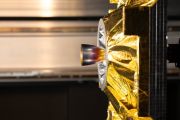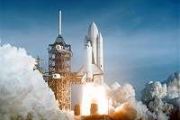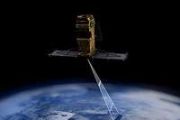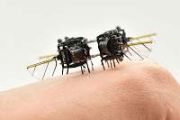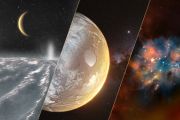
Copernical Team
Explosion on a white dwarf observed
 When stars like our Sun use up all their fuel, they shrink to form white dwarfs. Sometimes such dead stars flare back to life in a super hot explosion and produce a fireball of X-ray radiation. A research team led by FAU has now been able to observe such an explosion of X-ray light for the very first time.
"It was to some extent a fortunate coincidence
When stars like our Sun use up all their fuel, they shrink to form white dwarfs. Sometimes such dead stars flare back to life in a super hot explosion and produce a fireball of X-ray radiation. A research team led by FAU has now been able to observe such an explosion of X-ray light for the very first time.
"It was to some extent a fortunate coincidence New NASA Black Hole Sonifications with a Remix
 Since 2003, the black hole at the center of the Perseus galaxy cluster has been associated with sound. This is because astronomers discovered that pressure waves sent out by the black hole caused ripples in the cluster's hot gas that could be translated into a note - one that humans cannot hear some 57 octaves below middle C. Now a new sonification brings more notes to this black hole sound mach
Since 2003, the black hole at the center of the Perseus galaxy cluster has been associated with sound. This is because astronomers discovered that pressure waves sent out by the black hole caused ripples in the cluster's hot gas that could be translated into a note - one that humans cannot hear some 57 octaves below middle C. Now a new sonification brings more notes to this black hole sound mach Sols 3471-3472: Up The Mountain We Go!
 After a successful 47m drive with ~5 m of elevation gain by Curiosity yestersol, we arrived at more new and interesting terrain to investigate! I was on shift as Science Operations Coordinator (SOC), and my role is to keep the pulse on both the science priorities and the rover resources and constraints. It involves a lot of interdisciplinary communication between both the international science t
After a successful 47m drive with ~5 m of elevation gain by Curiosity yestersol, we arrived at more new and interesting terrain to investigate! I was on shift as Science Operations Coordinator (SOC), and my role is to keep the pulse on both the science priorities and the rover resources and constraints. It involves a lot of interdisciplinary communication between both the international science t Wealthy nations carving up space and its riches, leaving others behind
 Satellites help run the internet and television and are central to the Global Positioning System. They enable modern weather forecasting, help scientists track environmental degradation and play a huge role in modern military technology.
Nations that don't have their own satellites providing these services rely on other countries. For those that want to develop their own satellite infrastr
Satellites help run the internet and television and are central to the Global Positioning System. They enable modern weather forecasting, help scientists track environmental degradation and play a huge role in modern military technology.
Nations that don't have their own satellites providing these services rely on other countries. For those that want to develop their own satellite infrastr US and Britain enter commercial spaceflight partnership
 The United States and Britain entered into a commercial spaceflight partnership agreement Thursday with the aim to launch cheaper, quicker and more streamlined spaceflight operations.
Transportation Secretary Pete Buttigieg and his British counterpart, Grant Shapps, signed the agreement at Maryland's Smithsonian Institution, London's Department for Transport said in a statement Friday.
The United States and Britain entered into a commercial spaceflight partnership agreement Thursday with the aim to launch cheaper, quicker and more streamlined spaceflight operations.
Transportation Secretary Pete Buttigieg and his British counterpart, Grant Shapps, signed the agreement at Maryland's Smithsonian Institution, London's Department for Transport said in a statement Friday. ISRO tests human-rated HS200 solid rocket booster for Gaganyaan mission
 The Indian Space Research Organisation (ISRO) on Friday went a step ahead in its human space mission programme 'Gaganyaan' by successfully completing the static test firing of the solid fuel powered rocket booster engine.
"ISRO successfully completed the static test of a human-rated solid rocket booster (HS200) for the Gaganyaan Programme at Satish Dhawan Space Centre (SDSC), Sriharikota,
The Indian Space Research Organisation (ISRO) on Friday went a step ahead in its human space mission programme 'Gaganyaan' by successfully completing the static test firing of the solid fuel powered rocket booster engine.
"ISRO successfully completed the static test of a human-rated solid rocket booster (HS200) for the Gaganyaan Programme at Satish Dhawan Space Centre (SDSC), Sriharikota, Terran Orbital ships CENTAURI-5 satellite to Cape Canaveral
 Terran Orbital Corporation (NYSE: LLAP), a global leader in satellite solutions, primarily serving the United States aerospace and defense industry, has announced it shipped its CENTAURI-5 satellite to Cape Canaveral in preparation for the SpaceX Transporter-5 launch.
The CENTAURI-5 spacecraft is part of a constellation commissioned by Fleet Space Technologies to deliver global connectivit
Terran Orbital Corporation (NYSE: LLAP), a global leader in satellite solutions, primarily serving the United States aerospace and defense industry, has announced it shipped its CENTAURI-5 satellite to Cape Canaveral in preparation for the SpaceX Transporter-5 launch.
The CENTAURI-5 spacecraft is part of a constellation commissioned by Fleet Space Technologies to deliver global connectivit Scientists grow plants in lunar soil
 In the early days of the space age, the Apollo astronauts took part in a visionary plan: Bring samples of the lunar surface material, known as regolith, back to Earth where they could be studied with state-of-the-art equipment and saved for future research not yet imagined.
Fifty years later, at the dawn of the Artemis era and the next astronaut return to the Moon, three of those samples h
In the early days of the space age, the Apollo astronauts took part in a visionary plan: Bring samples of the lunar surface material, known as regolith, back to Earth where they could be studied with state-of-the-art equipment and saved for future research not yet imagined.
Fifty years later, at the dawn of the Artemis era and the next astronaut return to the Moon, three of those samples h SpaceX launches Starlink satellites from California

A SpaceX rocket carried 53 satellites for the Starlink internet constellation into orbit Friday after blasting off from California.
The Falcon 9 booster lifted off from Vandenberg Space Force Base at 3:07 p.m., and minutes later the first stage landed on a droneship in the Pacific Ocean while the second stage continued toward low Earth orbit.
SpaceX later tweeted that the satellites were successfully deployed.
Fifth Blue Origin flight scheduled for next week

Jeff Bezos's Blue Origin space tourism company announced Friday that its next rocket will take off on May 20 with six passengers on board.
One of the travelers will be the first woman born in Mexico to go into space.
Liftoff is scheduled for 8:30 am (1330 GMT) from western Texas. It will be the fifth manned space flight for the company.
Katya Echazarreta, who was born in Guadalajara, Mexico, arrived in the United States at age seven. Now 26, she will become the youngest American woman in space. The engineer was sponsored by the "Space for Humanity" program, which seeks to democratize access to space and selected her from among 7,000 candidates.
The crew will also include the second Brazilian person to go into space, Victor Correa Hespanha.
Blue Origin takes passengers above the Karman line, which marks the start of space at 100 kilometers (62 miles) high. The flight lasts about 10 minutes total.
Passengers can unfasten their seat belts and float for a few moments in zero gravity while they admire the curvature of Earth through the rocket windows.













